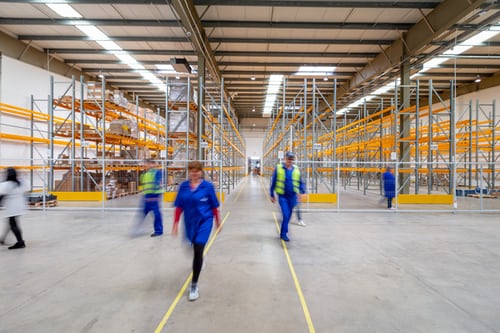Workers are the heart and soul of the warehousing industry. Their efforts are what drives profits, serve customers, and keep the facility running. However, there are significant costs associated with having and retaining a skilled work force. Without carefully planning for your warehouse labor needs, those costs could quickly overwhelm you.
Ensuring your facility has the staff it needs at peak times without overcrowding the warehouse floor during slow times can help maximize profit and efficiency. See the following tips for warehouse labor planning.
Reduce Volatility by Forecasting
Volatility is a reality for most warehouses. There are peak times like the weeks leading up to Christmas, and there are slow times like the weeks following a major holiday. While it is impossible to control or eliminate, a warehouse manager could take steps to limit volatility at critical times.
The key is proper forecasting. Forecasts are rarely perfect, but they are often helpful in highlighting the high-volume points in previous years. Labor planning is about more than anecdotal evidence or a gut feeling, however. The best warehouse managers rely on evidence and data when developing an effective labor plan. Collecting and using the following data is a vital part of forecasting:
- Sales averages
- Seasonal trends
- Day-of-the-week sales trends
- Year-to-year sales figures
- Marketing information
- Manufacturing statistics
Often, an accurate forecast can be completed based on the quantitative data available in your facility, thereby making it easier to prioritize warehouse labor planning.
Fill the Gaps Using Reliable Flex Labor
There is no better tool for dealing with the highs and lows of seasonal peaks in demand than flex labor. Gig labor provides warehouse managers with the skilled workers they need during volatile times. This approach to labor planning ensures that a warehouse is not over- or understaffed at any given time. While employees of the facility can handle warehouse operations during slow periods, you can fill in the gaps during high-volume days using flexible gig workers.
This is a best-case scenario for both the workers and the warehouse. Warehouse managers get qualified labor from skilled workers without the extensive costs associated with training and hiring them full time. Gig workers with free time on their hands get additional work that fits their schedule, making it a win-win situation for everyone involved.
The ideal approach to warehouse labor planning involves a synergy of all these moving parts. Forecasting can be beneficial, but only to the extent you are willing to go to make the most of it. A combination of accurate data collection and viable forecasting makes the use of gig labor an important tool for any warehouse.
Let HapiGig Vet Your Flex Labor Force
Just like with full-time employees, it is best to carefully vet the flex workers you intend to bring onboard. HapiGig can do the work for you by granting you access to a roster of highly skilled and motivated flex warehouse workers. Use our digital platform to connect with skilled gig workers so you can effectively plan your warehouse labor needs.

